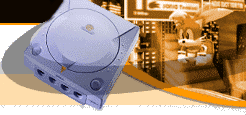If you've dreamed of seeing Tony ride a bike, get Dave Mirra. - Review By The Mad Giraffe

I used to watch skateboarders and marvel at the coordination and talent it took to pull off a trick. This was before I played Tony Hawk Pro Skater. Now I just yawn at simple tricks like the 900. I mean, sure, only Tony Hawk can do a 900 and can barely do it at that, but I've sailed across lamp posts, lept off tall buildings, faced bulls, and more while comboing it all with an assortment of grinds and manuals. Hell, I can even pick up speed while crouching on my board! As far as I'm concerned, I own Tony Hawk.
Of course, most people will try to snap me back into reality, whatever that is. Sure, I can't pull off those tricks in the real world, but I can in the game. The game makes it all seem so simple. A kick flip? Why, that's just the A button. Ghetto Bird? Left right X when my special meter is full. I think that's the key. Most skaters aren't aware of their special meters. Maybe then Tony Hawk could impress me in real-life.
Dave Mirra probably knows how much damage the games have done to the sport. He doesn't want people to lose any respect for him, and Acclaim's Dave Mirra Freestyle BMX is remarkably more realistic than Tony Hawk Pro Skater. Sure, tricks are only a button a way, but the realistic physics engine and more true to life courses ensure that Dave Mirra is a more faithful video game rendition of the sport. Still, part of what made Activision's Tony Hawk such a joy to play was the liberties taken with the realism and physics engine. Can Dave Mirra make a more realistic playing game while still successfully copying the fun of the extreme sports series which started it all? Let's find out.

Nice brick textures on a flat box. Still worth jumping around, though. |
The Good
Treyarch recreated much of the graphics in Tony Hawk Pro Skater 2 when it was ported from the PlayStation to the Dreamcast, and Z Axis has followed suit by enhancing the graphics to take advantage of the system. Logos on the sides of buildings are easily read, and the different types of terrain textures (dirt, grass, mud, cement, wood, etc.) look great. The player models also look good, and their animation is pretty spectacular. Everything from the bikers' legs and feet pedaling to the tricks themselves are represented wonderfully thanks to some awesome motion capturing (done by Dave Mirra, and Ryan Nyquist). Plenty of detailed objects including empty swimming pools, lawn chairs, and cranes can be found and used to initiate tricks. There are literally tons of ramps and halfpipes spread throughout the game, whether you're riding around in Dave Mirra's back yard or one of the many bike parks.
The environments (twelve in all) are also impressive for the most part. Pop-up exists although it is confined far away, and the framerate stays fast and/or smooth as a baby's butt for most of the game. While it is a bit disappointing that pop-up exists at all since some of the environments retain the flat look of the PlayStation original, it's really only a bother when stages incorporate tree wallpaper. Despite that shortcoming, the game leaves you with is fast, smooth graphics, all of which get major brownie points from me.

The tricks look really nice and are pretty varied. |
I'll mug the scouts for a few more points to distribute to the gameplay engine in Dave Mirra. The game is based on a point system like Tony Hawk, which is definitely good. Controlling the bikers is as easy as one, two, three. Anyone can just start up the game and jump right into it, and they will have no problems pulling off a few tricks. That is not to say it will be too easy for advanced gamers. Although the trick system is easy enough to jump right into, it is a definite challenge to master. Just to give you a little hint, this game boasts over one thousand tricks. Nonetheless, all are easily accessible via single button presses or coupled with tap or two of the D-pad. Three trick buttons, a jump button, and the shoulder triggers make the control seem like a natural extension of your arms and hands, minus that annoying bottom-placed controller cord. The controller scheme is remarkably similar to Tony Hawk, with the most noticeable difference being that your bike's speed will actually decrease while holding the jump button.
Many people will write this game off as Tony Hawk on bikes, but I object. The one major difference is the feel of the game. While Tony Hawk gave gamers an exaggerated feel for skateboarding (jumping off buildings and whatnot), Dave Mirra BMX gives gamers a true feel of freestyle biking. The jumps aren't overly exaggerated, and all of the tricks in the game can actually be pulled off in real-life. In fact, the game revels in its realistic approach, actually measuring the length of your grinds and the height of your jumps to determine your score. Dave Mirra is far more of a technical game than Tony Hawk, and while it may not have the unreal environments of that skateboarding classic, it does make a unique name for itself when it could have easily just copied Tony Hawk truck by wheel. While this simulation approach to freestyle biking may turn people away from the game, it is definitely a plus in my book.
Next: More Good, The Bad, and The Final Word


